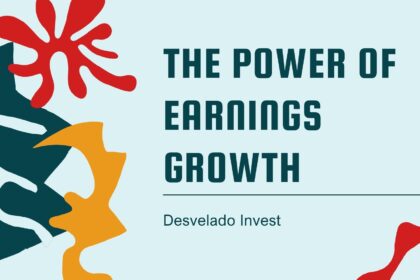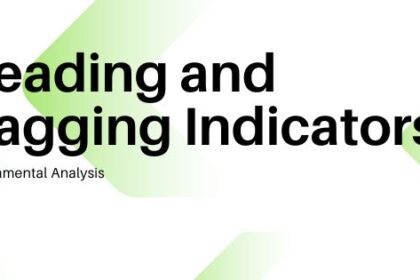Written By: Kaushal Sharma
Debt restructuring is a critical financial strategy that companies use to manage financial distress, prevent bankruptcy, and ensure long-term business sustainability. While it provides relief to companies burdened with high debt, it has consequences for shareholders. Some companies emerge stronger after restructuring, while others collapse due to mismanagement or industry downturns. In this article, we explore the concept of debt restructuring in depth, examine different methods, analyze real-world Indian case studies, and assess its impact on shareholders.
What is Debt Restructuring?
Debt restructuring refers to the process where a company facing financial difficulties renegotiates its debt terms with lenders to avoid default. Companies undertake restructuring to reduce their interest burden, extend repayment timelines, or even convert a portion of their debt into equity. The primary goal is to improve cash flow, restore operational efficiency, and regain investor confidence.
Industries that typically require debt restructuring include capital-intensive sectors such as telecom, infrastructure, power, and manufacturing, where companies take on substantial debt to fund expansion but later struggle due to macroeconomic factors, regulatory challenges, or mismanagement. If a company fails to manage its debt burden, it risks bankruptcy, leading to potential liquidation and severe losses for stakeholders.
Why Do Companies Need Debt Restructuring?
Companies resort to debt restructuring for various reasons, often linked to financial distress, market downturns, or external economic shocks. Some key factors leading to debt restructuring include:
- Liquidity Crunch – A company may face cash flow shortages, making it difficult to meet its short-term debt obligations. In such cases, restructuring provides immediate relief by reducing interest rates or deferring repayments.
- Excessive Leverage – Some firms take on excessive debt to finance expansion but later find themselves unable to generate sufficient profits to cover interest payments. Restructuring helps reduce the debt burden and improve solvency.
- Economic Downturns – Macroeconomic disruptions such as recessions, pandemics, or inflation spikes can severely impact revenue generation, forcing companies to seek restructuring solutions.
- Regulatory Hurdles – Changes in government policies or regulatory fines can put immense financial pressure on companies, as seen in the Indian telecom sector’s AGR dues crisis.
- Operational Mismanagement – Poor capital allocation, failed expansion strategies, or excessive diversification can weaken a company’s financial health, making debt restructuring necessary.
A prominent example is Vodafone Idea, which faced financial distress due to declining revenues and high Adjusted Gross Revenue (AGR) dues owed to the government. The company had to restructure its debt to ensure business continuity.
Types of Debt Restructuring
Debt restructuring can be broadly classified into voluntary and court-supervised processes.
- Voluntary Debt Restructuring – This is a mutual agreement between the company and its lenders to revise loan terms without legal intervention. Companies opt for voluntary restructuring when they foresee financial difficulties but have not yet defaulted on their loans. A notable example is Tata Motors, which refinanced its debt in 2020 to ease repayment pressure.
- Court-Supervised Restructuring – If a company has already defaulted, it may undergo restructuring through legal frameworks such as India’s Insolvency and Bankruptcy Code (IBC), 2016. This process involves creditors, insolvency professionals, and legal oversight to resolve the financial crisis. Jet Airways, for instance, went through IBC proceedings after failing to secure funds to sustain operations.
Methods of Debt Restructuring
Debt Rescheduling (Loan Refinancing)
This involves extending the tenure of a loan to reduce the company’s short-term repayment burden. By refinancing existing debt at a lower interest rate or extending maturities, companies can improve liquidity and maintain business operations. Vodafone Idea leveraged this method by restructuring its spectrum dues, converting part of the debt into equity for the government.
Debt-for-Equity Swap
In this method, lenders convert a portion of the company’s outstanding debt into equity, effectively making them shareholders. This reduces the debt burden but dilutes the ownership stake of existing shareholders. Suzlon Energy, an Indian wind energy company, adopted this approach to avoid bankruptcy, allowing lenders to acquire equity in exchange for writing off debt.
Haircuts & Write-offs
Lenders sometimes agree to take a “haircut,” which means accepting less than the total amount owed by the company. This occurs when the company is unable to generate sufficient cash flow to meet its obligations. The IL&FS crisis resulted in massive haircuts for lenders, as the infrastructure conglomerate defaulted on ₹91,000 crore of debt.
Asset Sales & Divestitures
Selling non-core assets or divisions is another way companies restructure debt. By monetizing assets, firms can raise funds to repay debt and focus on core business areas. Tata Motors sold its aerospace business to simplify its operations and reduce debt exposure.
Case Studies of Debt Restructuring in India
Successful Debt Restructuring Cases
Tata Motors (2019-2021)
Tata Motors faced a severe financial crunch due to declining auto sales and high debt. To manage the situation, the company restructured its loans, extended maturities, and divested non-core businesses. This strategy reduced debt by ₹23,500 crore, leading to a fivefold increase in its stock price.
Suzlon Energy (2020-2022)
Suzlon Energy accumulated ₹12,000 crore in debt due to aggressive expansion. To avoid insolvency, the company underwent debt restructuring through a debt-for-equity swap and operational cost-cutting. As a result, it managed to survive the crisis, and its stock surged by 200% post-restructuring.
Failed Debt Restructuring Cases
Jet Airways (2019-Present)
Jet Airways struggled with an ₹8,500 crore debt burden due to high operational costs and intense industry competition. Despite attempts at restructuring, the company failed to attract investors and entered insolvency proceedings. To date, its revival remains uncertain.
IL&FS (2018-2022)
Infrastructure Leasing & Financial Services (IL&FS) defaulted on massive debt due to mismanagement and fraudulent practices. The government intervened, but the restructuring process led to losses for banks and investors.
Impact of Debt Restructuring
Positive Effects of Debt Restructuring on Shareholders
When implemented effectively, debt restructuring can provide long-term benefits to shareholders by stabilizing operations, restoring investor confidence, and improving stock performance.
Stock Price Recovery and Value Appreciation
A well-executed restructuring plan often results in a sharp rebound in stock prices as the company demonstrates improved financial health. Investors react positively to reduced debt burdens, lower interest expenses, and a return to profitability.
Example: Tata Motors (2019-2021)
Tata Motors faced high leverage and slowing auto sales, which depressed its stock price. However, post-restructuring, the company reduced its debt burden, cut costs, and refocused on electric vehicles (EVs). As a result, the stock surged over 500% from its 2020 lows, delivering substantial gains to shareholders.
Improved Financial Stability and Reduced Default Risk
Restructuring allows a company to avoid bankruptcy by renegotiating debt terms, ensuring better cash flow management. This directly benefits shareholders by preserving the company’s existence and long-term value.
Example: Vodafone Idea (2022-2024)
Vodafone Idea faced immense financial stress due to AGR dues and high debt levels. The government’s debt-to-equity conversion plan reduced immediate liabilities, ensuring the company’s survival. Although shareholders experienced temporary dilution, the business remained operational, protecting long-term value.
Stronger Growth Prospects Post-Restructuring
Once financial pressure is alleviated, companies can refocus on expansion, new projects, and operational improvements, leading to higher future earnings and stock price appreciation.
Example: Suzlon Energy (2020-2023)
Suzlon, once on the brink of insolvency, restructured ₹12,000 crore of debt via a debt-to-equity swap and operational cost reductions. This restored financial discipline, and as global demand for renewable energy surged, Suzlon’s stock rallied over 200% in subsequent years.
Reduction in Cost of Equity Due to Improved Financial Health
A successful restructuring lowers default risk, improving investor confidence and reducing stock volatility (beta, β), leading to a lower cost of equity (Ke).
Example: Tata Motors and Suzlon Energy saw a decline in their Ke after restructuring led to financial stability and better future earnings potential.
Negative Effects of Debt Restructuring on Shareholders
While restructuring can rescue companies, it often comes at a cost to shareholders, including dilution, loss of control, and stock price volatility.
Shareholder Dilution Due to Debt-to-Equity Conversion
In many cases, lenders convert debt into equity, significantly diluting the ownership stake of existing shareholders. This increases the number of outstanding shares, potentially reducing earnings per share (EPS) and lowering stock value.
Example: Vodafone Idea’s Government Stake (2022-2023)
To restructure its AGR dues, Vodafone Idea converted ₹16,000 crore of debt into equity, granting the Indian government a 33% stake in the company. This reduced the ownership percentage of existing shareholders, leading to temporary stock price weakness.
Loss of Promoter Control and Shareholder Influence
When debt restructuring leads to major shareholding shifts, original promoters or shareholders may lose decision-making power. Creditors, government entities, or strategic investors often take control of the company’s operations and board decisions.
Example: Jet Airways (2019-2023)
Jet Airways’ financial distress led to lenders taking control, and founder Naresh Goyal lost his stake. Even after restructuring, the airline’s revival remains uncertain, with original shareholders having minimal influence over its future.
Stock Price Volatility and Negative Sentiment
Debt restructuring creates uncertainty, causing stock prices to fluctuate sharply. Some investors sell their holdings due to dilution fears or scepticisms about the company’s ability to execute its turnaround plan.
Example: IL&FS Crisis (2018-2022)
When IL&FS defaulted on ₹91,000 crore of debt, restructuring efforts caused massive volatility in its stock and related entities. Banks and financial institutions holding IL&FS debt suffered, leading to a market-wide correction.
Increase in Cost of Equity Due to Higher Perceived Risk
If restructuring involves significant dilution, operational uncertainty, or an unclear turnaround strategy, equity investors demand a higher return (Ke) to compensate for increased risk. Stock price volatility (β) rises, making equity financing more expensive.
Example: Vodafone Idea saw its Ke increase post-restructuring due to dilution concerns and weak business fundamentals, making future equity raises costlier.
Factors That Determine Whether Shareholders Benefit or Suffer
The impact of debt restructuring on shareholders depends on multiple factors:
– Execution of Restructuring Plan – If restructuring is well-planned with operational improvements, shareholders benefit; otherwise, they suffer dilution or losses.
– Industry Outlook – A company in a growing sector (e.g., renewable energy) is more likely to recover than one in a declining industry (e.g., traditional telecom).
– Extent of Debt Reduction – If restructuring substantially reduces debt without excessive dilution, shareholders retain value.
– Investor Sentiment and Market Conditions – A positive macroeconomic environment enhances post-restructuring stock recovery.
– Regulatory and Government Support – Policy support (e.g., Vodafone Idea’s AGR relief) can significantly influence shareholder outcomes.






